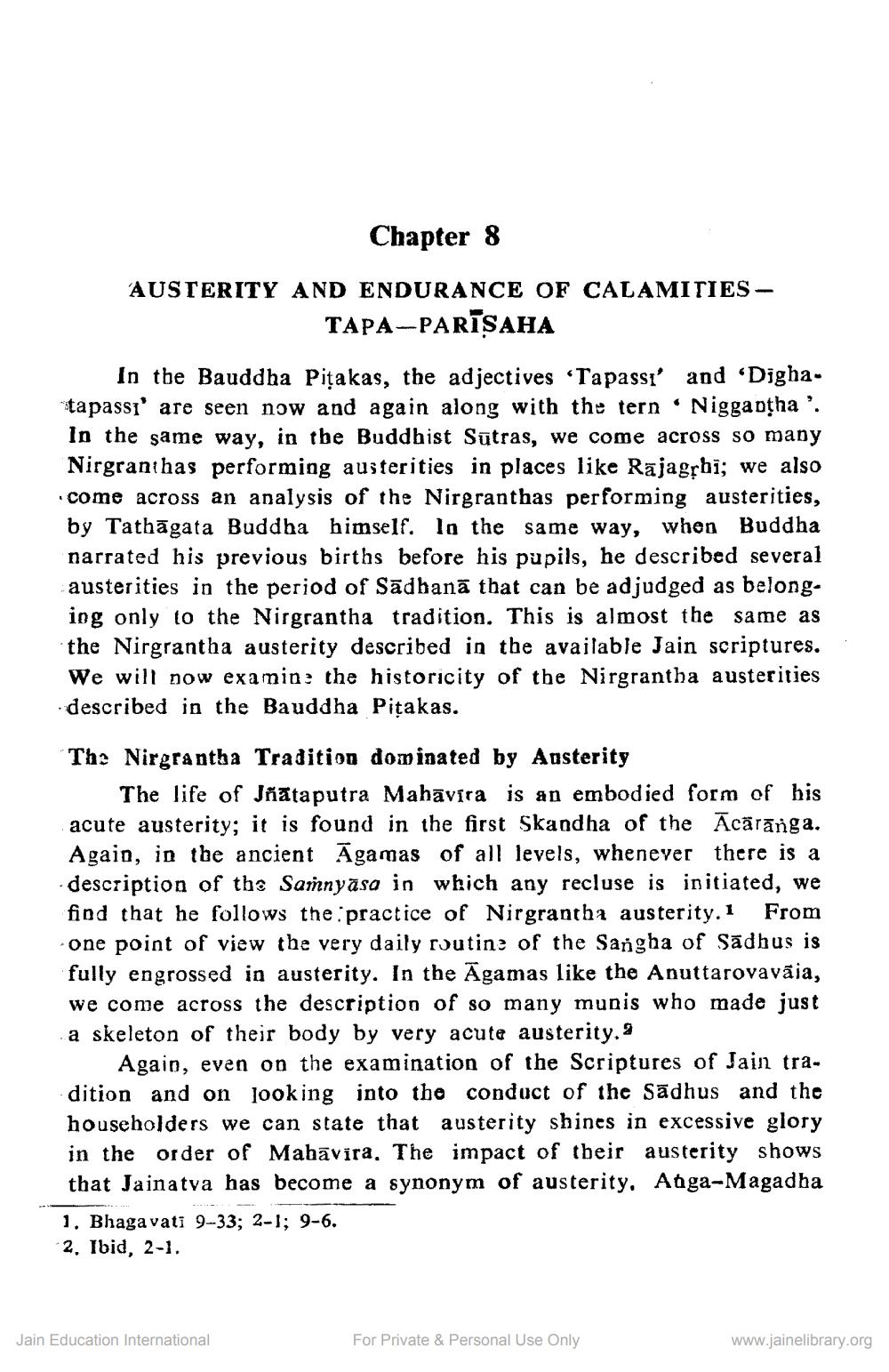________________
Chapter 8
AUSTERITY AND ENDURANCE OF CALAMITIES
TAPA-PARISAHA
In the Bauddha Pitakas, the adjectives Tapassı' and 'Dighatapassı' are seen now and again along with the tern Niggantha '. In the same way, in the Buddhist Sutras, we come across so many Nirgranthas performing austerities in places like Rajagṛhi; we also come across an analysis of the Nirgranthas performing austerities, by Tathāgata Buddha himself. In the same way, when Buddha narrated his previous births before his pupils, he described several austerities in the period of Sadhana that can be adjudged as belonging only to the Nirgrantha tradition. This is almost the same as the Nirgrantha austerity described in the available Jain scriptures. We will now examine the historicity of the Nirgrantha austerities described in the Bauddha Pitakas.
The Nirgrantha Tradition dominated by Austerity
The life of Jñataputra Mahavira is an embodied form of his acute austerity; it is found in the first Skandha of the Acaranga. Again, in the ancient Agamas of all levels, whenever there is a description of the Samnyasa in which any recluse is initiated, we find that he follows the practice of Nirgrantha austerity. 1 From one point of view the very daily routine of the Sangha of Sadhus is fully engrossed in austerity. In the Agamas like the Anuttarovavaia, we come across the description of so many munis who made just a skeleton of their body by very acute austerity.
Again, even on the examination of the Scriptures of Jain tradition and on looking into the conduct of the Sadhus and the householders we can state that austerity shines in excessive glory in the order of Mahavira. The impact of their austerity shows that Jainatva has become a synonym of austerity. Anga-Magadha 1. Bhagavati 9-33; 2-1; 9-6. 2. Ibid, 2-1.
Jain Education International
For Private & Personal Use Only
www.jainelibrary.org




